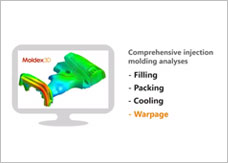|
|
Moldex3D is the world leading CAE product for the plastics injection molding industry.
With the best-in-class analysis technology, Moldex3D can help you simulate the widest application range of injection molding processes to optimize product design and manufacturability, shorten time-to-market, and maximize product ROI.
View PDF:
To download FREE Moldex3D Viewer, Click Download page. |
|
- CAD-Embedded Pre-Processing
- Superior Automatic 3D Mesh Engine
- High Resolution 3D Mesh Technology
- High Performance Parallel Computing
|
|

Moldex3D eDesign offers designers an easy-to-use package to validate their designs behind the desk. The interactive interface that facilitates the part and mold creation and provides auto meshing enables users to work in CAD with no need for advanced CAD knowledge. The accurate 3D model allows you to gain product insights, visualize flow and thermal properties, and optimize processes before physical parts are built. Moldex3D eDesign helps companies to design products with quality, reduce development costs, and shorten time to market.
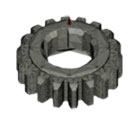 |
| Automatic 3D meshing systems |
|
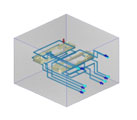 |
| Automatic 3D meshing systems |
|
 |
| Automatic 3D meshing systems |
|
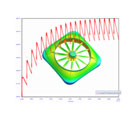 |
| Automatic 3D meshing systems |
|
1 |
Create a part with complete runner and cooling system within few clicks
The pre-processer Designer provides an interactive interface for users to build their parts with ease. Auto wizards guide you through steps of creating melt delivery system including sprues, runners, and gates, and building coolant channels and moldbases, with automated error detection. The auto meshing tools simplify the model creation and allow designers to validate designs efficiently. |
|
2 |
Perform 3D numerical analyses with accuracy
The powerful 3D solution tackles complex injection molded parts with confidence. Designers are able to obtain the in-depth knowledge and detect potential defects from comprehensive analyses. The Material Database and Process Wizard allow users to easily iterate on design changes and optimize their processes in early stages. |
|
3 |
Generate reports automatically and present results in multiple ways
Post-processing tools enable users to demonstrate molding process and product properties with real-time contours, graphs and animations. From the automatic report generator, you can benefit on quick reports and efficient communication. Moldex3D brings you confidence in your design and helps you in successful decision making. |
Moldex3D Flow enables users to simulate the filling patterns of injection molding to help predict potential manufacturing problems, such as weld lines, air traps, short shots, sink marks, etc., and verify gate contribution for flow balance.
|
 |
The explicit analysis capabilities of Moldex3D Flow give you deep insight in plastic flow behaviors from macro view to micro view, such as fountain flow, inertia effect and gravity effect. With the power of Moldex3D Flow, you can clearly understand how melt flow progresses, accurately identify where weld surfaces are, and detect short shot problems, etc.
- Predict the melt front progression to see how the mold fills
- Predict 3D fountain flow phenomena, inertia phenomena, cavity effects, and viscosity heating effects
- Predict weld line locations to minimize or eliminate them
- Predict air traps
- Predict the injection pressure and evaluate the requirement of clamping force
- Evaluate the runner layout and type to minimize the volume of material and achieve runner balancing
- Optimize the gate location and size to minimize weld lines and achieve balanced filling
- Optimize process conditions in filling stage, such as injection time, melt temperature, ram speed profile, etc
- Simulate filling process for multi-cavity molds or family molds
- Simulate multi-component molding process, including insert molding and multi-shot sequential molding (Moldex3D MCM module is required)
- Solid melt flow analysis
- Melt front time prediction
- Pressure
- Temperature
- Shear stress
- Shear rate
- Velocities in X, Y, Z
- Volumetric shrinkage
- Density
- Melting core
- Total velocity
- Velocity vector field
- Sprue pressure variation during filling process
|
- Clamping force of mold in X, Y, Z directions
- Flow rate variation during filling process
- Clamping force prediction
- Weld lines prediction
- Air traps prediction
- Runner design evaluation
- Runner layout
- Runner size
- Runner type
- Gate design evaluation
- Gate location
- Gate type
- Gate size
|
Moldex3D Pack incorporates the material compressibility (PVT changes) to fully simulate the density variation and melt flow behaviors during the packing process.
It helps users precisely determine gate freeze time, efficient packing time and packing pressure, and warpage prediction to minimize high volumetric shrinkage.
Using Moldex3D Pack, even for thick parts or parts with big thickness changes, you can also investigate all factors in packing process from material choice, gate design, and processing conditions. With true 3D technology, it can help you to preciously determine gate freeze time, efficient packing time and proper packing pressure to minimize areas of high volumetric shrinkage. |
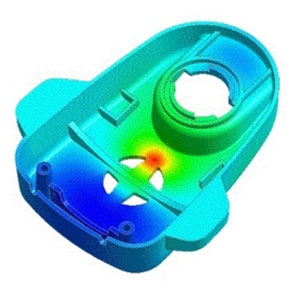 |
- Predict the requirement of clamping force in packing stage
- Predict areas of high volumetric shrinkage
- Predict gate freeze time
- Evaluate gate design to extend gate freeze time
- Optimize process conditions in packing stage, such as packing time, packing pressure, VP switch, etc
- Evaluate the design parameters for the revision or optimization of design
- Simulate multi-component molding process, including insert molding and multi-shot sequential molding (Moldex3D MCM module is required)
Packing analysis
- Pressure
- Temperature
- Shear stress
- Shear rate
- Volumetric shrinkage
- Density
- Melting core
- Sprue pressure history
- Flow rate history
- Clamping force
- Clamping force prediction
|
High volumetric shrinkage areas prediction
Gate freeze time prediction
Gate design evaluation
- Gate location
- Gate type
- Gate size
|
Moldex3D Cool improves cooling system productivity and efficiency to optimize mold and cooling circuit designs and reduce cycle times, especially for complicated geometry parts simulation.
Furthermore, the advanced transient cool feature is also supported to bring more accurate analyses for variotherm heating system, such as RHCM, and conformal cooling process simulation. Users can easily observe dynamic mold temperature and optimize cooling process.
Based on true 3D technology, Moldex3D Cool is an efficient tool to accurately analyze the mold temperature, the efficiency of cooling channel layout and the required cooling time in the design phase.
Moldex3D Cool is a useful troubleshooting tool to detect possible mold cooling system defects, such as unbalanced cooling, hot spots, prolonged cooling time due to poor cooling efficiency. With true 3D technology, users can accurately evaluate cooling efficiency to further optimize the cooling system design and reduce cycle time. |
 |
- Predict temperature within part, runner, cooling channels, inserts, etc
- Evaluate the efficiency of cooling system design, including cooling circuits, inserts, mold base, heating rod, etc
- Minimize unbalanced cooling problem
- Determine the required cooling cycle time
- Optimize mold cooling system design to achieve optimum cooling efficiency with the minimum cycle time
- Use an easy and fast cooling analysis solution “Mesh-Free eDesign FastCool” to quickly validate mold cooling system designs.
- Simulate multi-component molding process, including insert molding and multi-shot sequential molding(Moldex3D MCM module is required)
1 |
Part cooling analysis
- Calculate 3D temperature distribution within part, runner and part insert.
- Calculate frozen areas
- Calculate heat transfer rate and heat load
- Calculate required cooling time
|
|
2 |
Moldbase cooling analysis
- Calculate solid temperature distribution within mold base, insert and cooling circuit
- Calculate the cooling circuit efficiency
- Calculate part insert effects (Moldex3D MCM module is required)
- Calculate mold insert of different materials, such as beryllium copper.
- Calculate heating rod effects
|
|
3 |
Cooling channel network analysis
- Calculate coolant temperature along each cooling channel
- Calculate the pressure drop of each cooling channel
- Analyze the Reynolds number along each cooling channel
|
|
4 |
Auto-set cooling time analysis
- Provide easy-to-use and improved estimation for the required cooling time
|
|
5 |
Coupled Flow-Pack-Cool analysis
- Incorporate the heat flux results from Flow, Pack analysis for cooling calculation.
- Improve accuracy of Flow, Pack, Cool and Warp analyses.
|
|
6 |
Transient Cooling analysis
- Support variotherm process simulation
- Support RHCM process simulation.
- Predict temperature variation history in mold cooling stage.
|
Moldex3D Warp provides a reliable analysis capability to simulate the key issues of shrinkage and warpage behaviors, further controlling the blemishes of molded products.
Based on the filling, packing and cooling analyses by Moldex3D Flow, Pack, Cool, Moldex3D Warp allows users to perform true 3D warpage analysis on thick parts and those parts that have extreme thickness changes. With Warp, users can easily and efficiently improve the part quality and optimize design. For fiber-filled material, Warp incorporates fiber composite theories and the fiber orientation results from Fiber to predict its anisotropic shrinkage and warpage. Furthermore, Warp links with I2 modules to interface with structural analysis software. |
 |
- Evaluate final part shape before actual molding
- Evaluate both single cavity and multi-cavity molds
- Evaluate unbalanced cooling effect on warpage
- Evaluate volumetric shrinkage effect on warpage
- Evaluate molecular and/or fiber orientation effect on warpage (Moldex3D Fiber module is required to predict fiber orientation)
- Evaluate in-mold constraint effect on warpage
- Evaluate moldbase thermal deformation effect
- Evaluate thermally induced residual stress
- Query any two points to determine the linear shrinkage ratio between two locations
- Define an arbitrary reference plane for easy measurement of deflection
- Separate total displacement into x-axis, y-axis, and z-axis displacements to show the deformation in each direction
- Export warpage shape in STL format or Moldex3D Mesh format for further study
- Export inverse warpage shape in STL format or Moldex3D Mesh format for further study
1 |
Part warpage analysis
- Calculate final part shape due to material shrinkage as the temperature and pressure changes from the process settings to room conditions
|
|
2 |
Residual stress analysis
- After part ejection, the part shrinks and deforms to an equilibrium shape. At this moment, the remaining stress
- inside the part is called process-induced residual stress
- Calculate residual stresses developed during the entire molding cycle, including effects of temperature and pressure distributions, material orientation and geometric features
|
|
3 |
Material anisotropic analysis
- Anisotropic properties are calculated based on the material orientation tensors obtained from flow analysis
- Anisotropic properties are transferred to general structure CAE software for analyzing the part structure with process-induced properties.
|
|
4 |
In-mold constraint effect analysis
- Before the part is ejected, the deformation of warpage has been developed inside the mold. However, it cannot shrink and deform freely due to constraints by the rigid mold.
- Calculate the in-mold constraint induced part warpage to enhance the analysis accuracy.
|
Moldex3D MCM diversifies the development of plastic molded product.
Its explicit analysis capabilities enable users to evaluate insert molding, overmolding and multi-shot sequential molding process, helps accurately observe interaction behaviors and minimize part warpage.
Multi-component molding is one of the greatest methods to diversify the development of the plastic molded product fabrication. Moldex3D MCM simulates the multiple components molding process, including insert molding, overmolding and multi-shot sequential molding. Based on true 3D technology, explicit analysis capabilities of Moldex3D MCM give you a powerful tool to accurately analyze the interaction behavior of different components and further optimize product design. Moreover, this module helps you to predict the warpage due to property mismatch of different materials, prolonged cooling time and unsymmetrical shrinkage in two-color or overmolding processes…etc. |
 |
- Simulate insert molding, overmolding and multi-shot sequential molding process
- Evaluate melt flow and flow pressure around plastic or metal inserts
- Evaluate the effect of insert material in mold cooling performance and insert temperature distribution in the molding process
- Evaluate the interaction effect of part inserts and parts in warpage
- Evaluate the mechanical property (fiber orientation) effect of part inserts and parts in warpage analysis
- Detect thermal degradation problem of plastic components due to reheating by hot melt flow
- Predict temperature variation within the inserts during the molding process
- Employ parallel computing technology to enhance computation speed and extend analysis capability
All Moldex3D 3D solvers support multi-core and multi-CPU parallel computing to greatly shorten simulation time.
The three major concerns of industrial CAE users are accuracy, computation speed and user-friendliness. True 3D simulation not only satisfies those concerns, but offers more advantages that conventional 2.5D cannot reach, such as CAD integration, accuracy, minimized model simplification…etc. However, true 3D simulation inevitably increases computation time and requests more memory. Although the High-Performance Finite Volume Method, HPFVM, employed by Moldex3D eDesign has already outperformed other 3D software, but users are still eagerly expecting significant improvements.
|
 |
Moldex3D eDesign takes the lead in parallel computing to enhance the computation performance and perform analyses in less time on more complex model with larger element count than ever. The high-performance parallelized kernel is equipped integrated analyses of Flow, Pack, Cool, Warp, Fiber Orientation and RIM (Reactive Injection Molding). Furthermore, Moldex3D eDesign parallel computing technology supports both Multi-CPU platform and PC-Cluster.
For optical parts, fiber-reinforced automobile components, connectors, gears…etc., the demand for high accuracy and high speed computation can never be underestimated. Computation speed can be improved by newer and more powerful CPU. However, improvement from CPU clock rate alone cannot satisfy industrial users in speed nor accuracy. Utilization of multiple CPU is therefore the most effective approach.
1 |
Performance Benchmark
Moldex3D, the leading professional CAE for injection molding, is the ONLY one offering the entire parallel computing support in Flow, Pack, Cool, Warp, Fiber, MCM, and so on. By utilizing the strength of multi-Core or multi-CPU, the time required for analysis is greatly shortened. For example, the computing efficiency is enhanced up to fifty to eighty percent on general dual-core PC, even much more. Moldex3D parallel computing lowers your cost and contributes to outstanding performance. |
|
2 |
System Requirements
The parallel computing of Moldex3D requires distributed systems with high performance interconnects. The amount of data passed between processors in a typical Moldex3D run could be in hundreds to thousands megabytes. The followings are the basic system requirements. |
|
3 |
Managing Node
- Microsoft Windows Server 2008 R2 64bit recommended.
- Intel Quad Core CPU or AMD Opteron based CPU. (Intel Core i7 and Xeon with Nehalem microarchitecture are recommended)
- 8.0 GB RAM or greater.
- Gigabit Ethernet or greater
|
|
4 |
Computing Node
- Microsoft Windows 7 64Bit recommended.
- Intel Quad Core CPU, or AMD Opteron based CPU. (Intel Core i7 and Xeon with Nehalem microarchitecture are recommended.)
- 2.0 GB RAM or greater.
- Gigabit Ethernet or greater.
|
|
5 |
Network
- Gigabit switch or greater.
|
|
|



